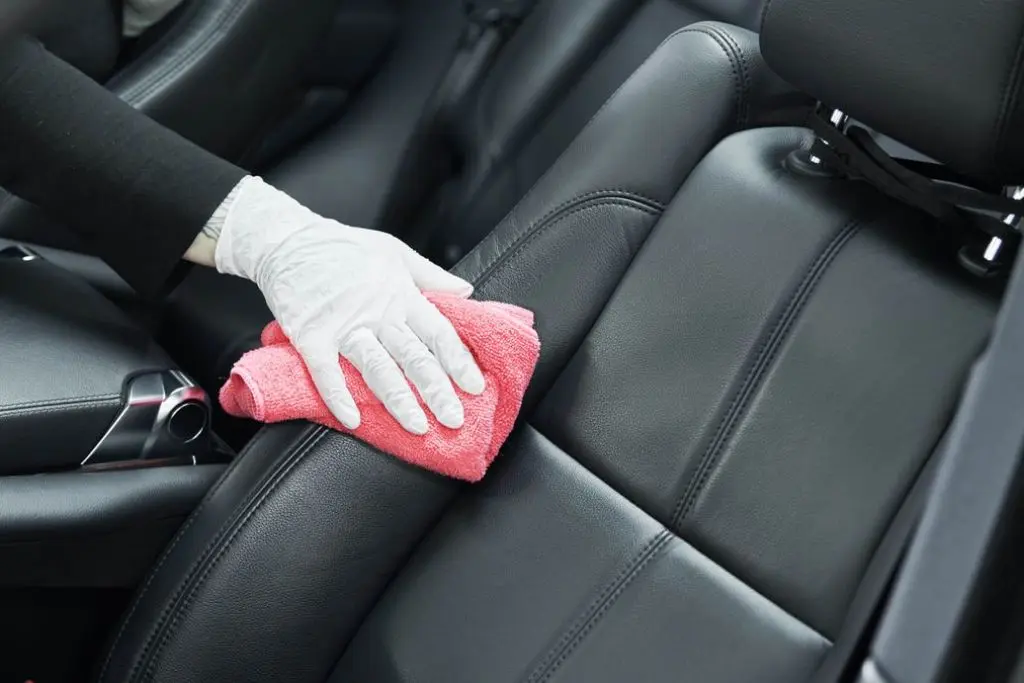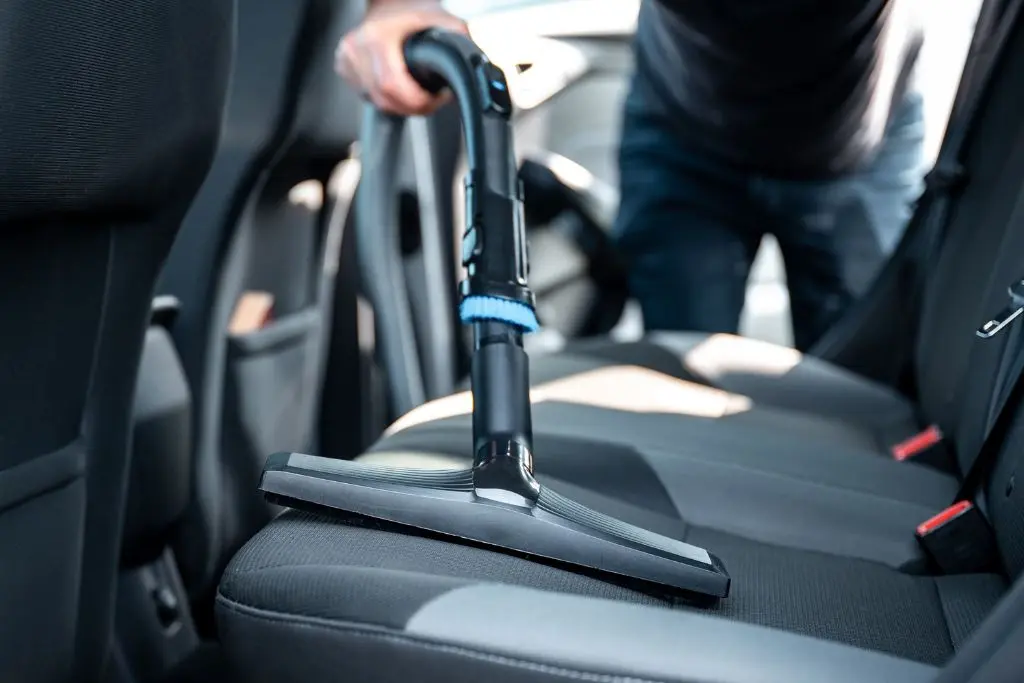To clean car seat belts, use mild soap and warm water. Scrub gently with a soft brush, then air dry.
Keeping car seat belts clean is crucial for both appearance and hygiene. Dirty seat belts can harbor bacteria, stains, and unpleasant odors. Regular cleaning ensures they remain safe and extend their lifespan. Use mild soap and warm water to avoid damaging the fabric.

Scrub gently with a soft brush to remove dirt and grime effectively. Avoid harsh chemicals that can weaken the material. After cleaning, allow the seat belts to air dry completely. This simple maintenance task keeps your vehicle’s interior fresh and ensures a safer driving experience. Regular care of seat belts also helps maintain the overall value of your car.
Importance Of Cleaning Car Seat Belts
Car seat belts are often overlooked when cleaning a vehicle. Yet, they play a crucial role in ensuring your safety. Dirty seat belts can harbor bacteria and grime. This can lead to unpleasant odors and potential health risks. Regular cleaning of car seat belts not only maintains hygiene but also prolongs their lifespan. Understanding the importance of keeping them clean can make your car a safer place.
Preventing Dirt Build-up
Dirt and grime can accumulate on seat belts over time. This is due to constant use and exposure to various elements. Preventing dirt build-up helps in maintaining the cleanliness and durability of the seat belts. Here are some tips to prevent dirt accumulation:
- Wipe the seat belts regularly with a damp cloth.
- Avoid eating or drinking in the car to minimize spills.
- Vacuum the car interior to remove dust and debris.
- Use protective covers on the seats to reduce dirt transfer.
By following these simple steps, you can keep your car seat belts clean and in good condition. This also ensures that they function properly when needed.
Ensuring Safety
Clean seat belts are essential for your safety. Dirty or sticky belts can hinder their performance. This can be dangerous in an emergency. To ensure safety, it’s important to clean the seat belts thoroughly and regularly. Here are steps to ensure your seat belts are safe and clean:
- Extend the seat belt fully to check for any stains or dirt.
- Use a mild detergent and a soft brush to scrub the belt.
- Rinse with clean water and let it air dry completely.
- Inspect the belt for any signs of wear or damage.
These steps help in maintaining the integrity and functionality of the seat belts. Clean seat belts not only look better but also provide better protection. Always ensure that your seat belts are clean and in good condition. This way, you can drive with peace of mind, knowing you are safe.
Materials Needed For Cleaning
Cleaning car seat belts is essential for maintaining their appearance and functionality. Over time, seat belts can accumulate dirt, grime, and stains, which can affect their performance and safety. Using the right materials and techniques ensures that your seat belts remain in good condition. Here are the materials needed for cleaning car seat belts and how to use them effectively.
Mild Detergent
A mild detergent is crucial for cleaning car seat belts without damaging the fabric. It helps to remove dirt, stains, and odors effectively. Avoid using strong chemicals as they can weaken the seat belt material. A mild detergent is gentle yet effective for this purpose.
- Mix the detergent with water to create a soapy solution.
- Use a soft cloth or sponge to apply the solution to the seat belt.
- Gently scrub the surface to remove dirt and stains.
- Rinse the seat belt with clean water.
- Allow the seat belt to air dry completely.
| Brand | Type |
|---|---|
| Woolite | Liquid |
| Seventh Generation | Liquid |
| Dr. Bronner’s | Castile Soap |
Soft Cloth
A soft cloth is essential for cleaning car seat belts gently. It helps to apply the detergent solution without scratching or damaging the fabric. Using a rough cloth can cause fraying or wear on the seat belt.
- Microfiber cloth
- Cotton cloth
- Soft sponge
- Dip the cloth in the soapy solution.
- Wring out excess liquid to avoid soaking the seat belt.
- Gently wipe down the seat belt, focusing on stained areas.
- Rinse the cloth with clean water and wipe the seat belt again.
- Use a dry cloth to remove any remaining moisture.
Water
Water plays a vital role in cleaning car seat belts. It is used to dilute the detergent and rinse the seat belt. Clean water ensures that no detergent residue is left on the seat belt, which can cause irritation or damage over time.
- Mix water with mild detergent to create a cleaning solution.
- Rinse the seat belt thoroughly with clean water after scrubbing.
- Use lukewarm water for best results.
- Ensure the seat belt is completely rinsed to remove all soap.
- Allow the seat belt to air dry in a well-ventilated area.
Proper use of water ensures that your seat belts remain clean and free from soap residue. It helps maintain the integrity and safety of the seat belts over time.
Step-by-step Guide To Clean Car Seat Belts

Cleaning car seat belts is an important part of maintaining your vehicle’s interior. Dirty seat belts can become stiff and uncomfortable. They can also harbor bacteria and allergens. This step-by-step guide will help you clean your car seat belts effectively.
Remove The Seat Belt
First, pull the seat belt out as far as it will go. This ensures you can clean the entire length. Use a clamp or a clothespin to keep the belt extended. Make sure it doesn’t retract while you work.
Here are some steps to follow:
- Locate the seat belt anchor point.
- Unhook the seat belt from its anchor.
- Extend the seat belt fully.
- Use a clamp to hold it in place.
Keeping the seat belt extended helps you clean it thoroughly. This way, no part of the belt will be missed.
Prepare The Cleaning Solution
Next, prepare a cleaning solution. This can be done with simple household items. Mix mild soap with warm water. Avoid harsh chemicals as they can damage the fabric.
Here’s a simple recipe:
| Ingredient | Amount |
|---|---|
| Mild soap | 1 tablespoon |
| Warm water | 1 quart |
Stir the solution until the soap dissolves. You can also use a fabric cleaner. Make sure it’s safe for seat belts. Test it on a small area first.
Clean The Seat Belt
Dip a soft brush or cloth into the cleaning solution. Scrub the seat belt gently. Work from the top down. Be sure to clean both sides of the belt. Pay extra attention to stains.
Steps to follow:
- Dip the brush or cloth in the solution.
- Scrub the belt gently.
- Clean both sides of the belt.
- Rinse the belt with clean water.
After scrubbing, use a clean, damp cloth to wipe off the soap. This will help to remove any residue.
Dry The Seat Belt
After cleaning, it’s important to dry the seat belt. Use a dry towel to blot the belt. This will remove most of the moisture. Let the seat belt air dry completely. Avoid using a hairdryer or heater. Excessive heat can damage the belt.
Here are some tips:
- Blot the belt with a dry towel.
- Allow the belt to air dry.
- Avoid direct sunlight.
- Ensure the belt is fully dry before retracting.
Once the seat belt is dry, remove the clamp. Let the belt retract slowly. Now your car seat belt is clean and ready to use.
Maintenance Tips For Clean Seat Belts
Car seat belts can get dirty over time. Dust, food, and sweat can make them messy. Keeping your seat belts clean is important. Clean seat belts look good and are safe to use. Here are some tips to help you maintain them.
Regular Cleaning Routine
It is important to clean your car seat belts often. Here’s a simple routine to follow:
- Pull out the seat belt fully. This helps you clean the entire belt.
- Use a mild soap and warm water. Mix them in a small bowl.
- Dip a soft cloth in the soapy water. Wipe the seat belt gently.
- Scrub any stains using a soft brush. Be gentle to avoid damage.
- Rinse the seat belt with clean water. Use another cloth for this.
- Dry the belt with a towel. Let it air dry completely before retracting.
Regular cleaning helps keep seat belts in good condition. Dirt and grime can weaken the fabric. Cleaning once a month is a good habit. For very dirty belts, clean them more often.
Avoid Harsh Chemicals
Using the wrong cleaners can damage seat belts. Avoid harsh chemicals like bleach. These can weaken the fabric and make it unsafe. Always choose gentle cleaners.
- Read the labels on cleaning products. Make sure they are safe for fabric.
- Test a small area first. Check if the cleaner causes any damage.
- Stay away from solvents like acetone. These can break down the fibers.
- Use natural cleaners if possible. Vinegar and baking soda are good options.
Harsh chemicals can also cause discoloration. Seat belts may fade or change color. This can make your car look old. Keep your seat belts looking new by using gentle cleaners.
Our Previous Article
| How to Put on Car Seat Covers: Easy Step-by-Step Guide |
| How to Get Stains Out of Car Seat: Quick & Easy Solutions |
| How to Install Car Seat Covers With Hooks: Quick Guide |
Frequently Asked Questions On How to Clean Car Seat Belts
How Do I Clean Car Seat Belts Safely?
To clean car seat belts safely, use mild soap and warm water. Gently scrub the belt with a soft brush. Rinse and air dry completely before use.
Can I Use Bleach On Car Seat Belts?
It’s not recommended to use bleach on car seat belts. Bleach can weaken the fabric and compromise safety. Use mild soap instead.
How Often Should I Clean Car Seat Belts?
Clean your car seat belts every few months or when visibly dirty. Regular cleaning helps maintain their appearance and functionality.
What Tools Do I Need To Clean Seat Belts?
You need mild soap, warm water, a soft brush, and a clean cloth. These tools are effective and safe for cleaning car seat belts.
Conclusion
Keeping your car seat belts clean ensures safety and enhances your vehicle’s appearance. Regular maintenance prevents grime buildup and extends belt lifespan. Follow these simple steps for a spotless, fresh interior. Always prioritize cleanliness for a comfortable and safe driving experience.
Happy cleaning!
Last Updated on June 14, 2024 by Brian Beasley

